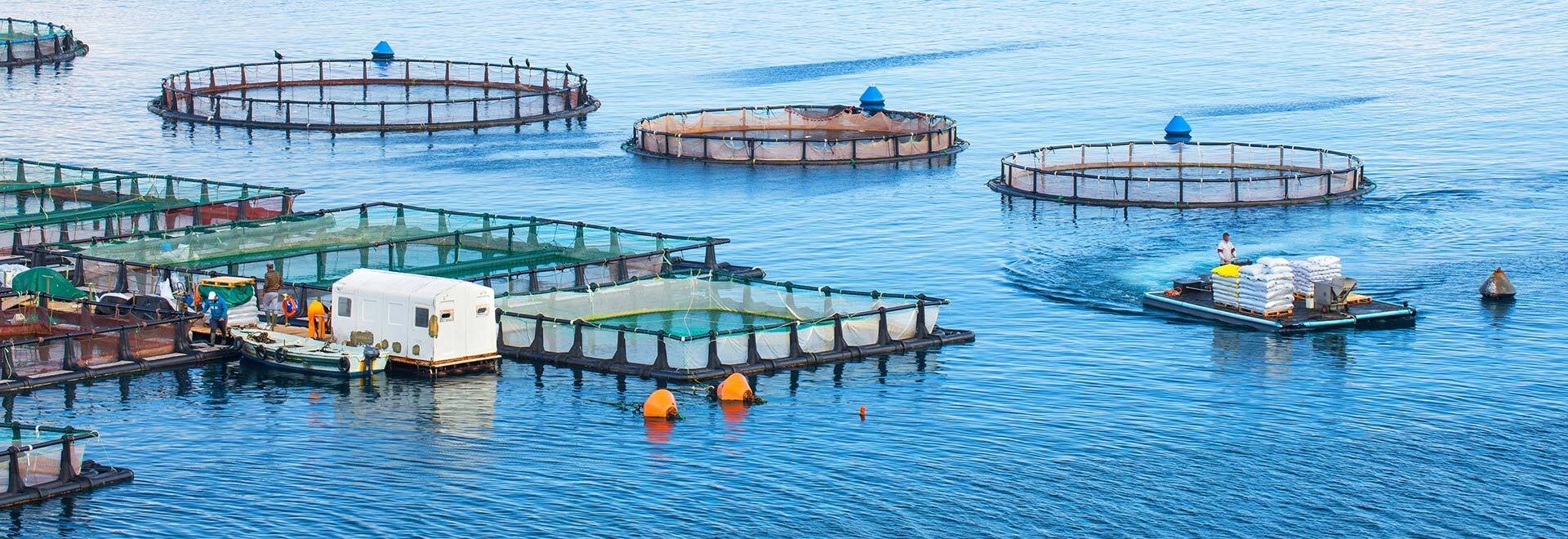Aquaculture is the practice of cultivation of aquatic organisms in controlled aquatic environments for any commercial, recreational or public purpose. It can be described as farming seafood as it resembles agriculture but done with fish, crustacean, shellfish, aquatic plants and other aquatic organisms. Being the fastest growing food production sector in the World, now responsible for over half of global seafood production, it plays a vital role in feeding a growing global population with sustainable food.
Total EU aquaculture production increased by 6% between 2011 and 2020, and during the same period its value grew by 18%, an increase of 535 billion euros [1]. The EU aquaculture sector is still far from reaching its full potential to meet the increasing demand for seafood and EU aquaculture accounts for less than 2% of global aquaculture production. The EU imports over 70% of the seafood it consumes [2]
Aquaculture production is very diverse in terms of species cultivated and methods of production (net pens, ponds, raceways, on-land recirculating aquaculture systems, etc). A thousand of different species are currently farmed in aquaculture operations around the world, and in the EU:
-
- more than 45% of aquaculture production is shellfish
- more than 30% of aquaculture production is marine fish
- more than 20% of aquaculture production is freshwater fish [3]
The main aquaculture producers among the EU Member States in 2019 were Spain, France, Italy and Greece, which together accounted for more than 70% of total aquaculture production [4]. EU aquaculture producers have mainly focused on Mediterranean mussels (around 36% of the total volume farmed in the EU), Atlantic salmon and rainbow trout together represent another 30% of the main commercial species. Other important farmed species in the EU being oyster, carp, sea bream, sea bass, eels, crayfish, flat-fish and clams.[5] Algae production in the EU is still limited but is increasing as well as the whole sector. [6]
WHY IS AQUACULTURE SO IMPORTANT?
Sustainable aquaculture can help solve some of the most pressing issues we face today [7]:
-
- It delivers nutritious and diverse food to a growing world population
- It reduces the need to catch more wild fish and helps to preserve fish stock
- It produces food with lower climate and environmental impact than other types of farming
- It creates jobs and economic development in costal and rural communities
- Certain types of aquaculture contributes to the preservation of ecosystems and biodiversity
FOR A SUSTAINABLE AQUACULTURE:According to the World Bank, Aquaculture is projected to be the prime source of seafood by 2030. When practiced responsibly, fish cultivation can help provide livelihoods and feed a growing global population. But for the system to be truly sustainable, it must achieve three aspects:
-
- Environmental sustainability – Aquaculture should not create any disruption or loss of biodiversity, or substantial pollution impact.
- Economic sustainability – Aquaculture must be a viable business on a long-term basis.
- Social and community sustainability – Aquaculture must be socially responsible and contribute to community well-being. [8]
The sustainable development of aquaculture in the EU is one of the main objectives of the Common Fisheries Policy (CPF). On 12 May 2021, the Commission published its new strategic guidelines (COM(2021)0236 including an annex) for more sustainable and competitive EU aquaculture and the development of the farm to fork strategy to accelerate the transition to a sustainable EU food system, recognising the potential of sustainable aquaculture to provide food and feed with a low carbon footprint. To implement these strategic guidelines, the Commission has set up the EU Aquaculture Assistance Mechanism (AAM). This platform aims to provide logistic, administrative and technical support to EU Member States, the EU aquaculture industry, and other relevant stakeholders. The AAM also includes a platform for the exchange of good practices and experiences for a sustainable aquaculture sector. Achieving this vision will require the different challenges and opportunities of the EU aquaculture sector to be addressed in order to reach the following inter-related objectives, namely:
-
- Building resilience and competitiveness;
- Participating in the green transition;
- Ensuring social acceptance and consumer information; and
- Increasing knowledge and innovation [9]
-
[1] The EU fish market, EUMOFA, 2022 edition
[2] Strategic guidelines for a more sustainable and competitive EU aquaculture for the periode 2021 to 2020, COM(2021) 236 final
[3] https://oceans-and-fisheries.ec.europa.eu/ocean/blue-economy/aquaculture/overview-eu-aquaculture-fish-farming_en#:~:text=EU%20aquaculture%20accounts%20for%20about,in%20coastal%20and%20rural%20areas
[4] https://www.eumofa.eu/documents/20178/477018/FR_Le+march%C3%A9+europ%C3%A9en+du+poisson_2021.pdf
[5] https://www.europarl.europa.eu/factsheets/en/sheet/120/production-aquacole-dans-l-union-europeenne
[6] https://oceans-and-fisheries.ec.europa.eu/ocean/blue-economy/aquaculture/overview-eu-aquaculture-fish-farming_en#:~:text=EU%20aquaculture%20accounts%20for%20about,in%20coastal%20and%20rural%20areas
[7] Blue farming in the European Green Deal, the European Commission, 2021
[8] Sustainable Aquaculture (worldbank.org)
[9] https://ec.europa.eu/commission/presscorner/detail/en/ip_21_1554
